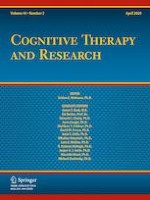28-11-2019 | Original Article
Emotional Nonacceptance, Distraction Coping and PTSD Symptoms in a Trauma-Exposed Adolescent Inpatient Sample
Gepubliceerd in: Cognitive Therapy and Research | Uitgave 2/2020
Log in om toegang te krijgenAbstract
Emotional nonacceptance is associated with greater posttraumatic stress disorder (PTSD) symptoms among trauma-exposed youth. Similarly, the use of distraction as a coping strategy is associated with greater PTSD symptoms, yet synergistic relations between emotional nonacceptance and distraction coping among trauma-exposed youth have not been examined. The present study examined associations and interactive effects of emotional nonacceptance and distraction coping in relation to PTSD symptoms among trauma-exposed inpatient adolescents. Participants included 50 adolescents (52.0% female; Mage = 15.1 years, SD = .51; 44% White) receiving acute psychiatric care at an inpatient hospital. All participants reported experiencing at least one traumatic event and completed measures of emotion dysregulation, coping strategies, and PTSD symptoms. Analyses revealed a significant interaction between emotional nonacceptance and distraction coping in relation to PTSD symptoms (∆R2 = 0.05; B = 0.60, SE = 0.29; t = 2.06, p = 0.045; 95% CI [0.12, 1.18]). PTSD symptoms were most severe among youth who reported higher levels of emotional nonacceptance and greater use of distraction as a coping strategy. Difficulties accepting negative emotions, coupled with greater use of distraction as a coping mechanism, were associated with more severe PTSD symptoms. The importance of teaching adaptive coping mechanisms to trauma-exposed youth who experience difficulties accepting negative emotions is discussed.
